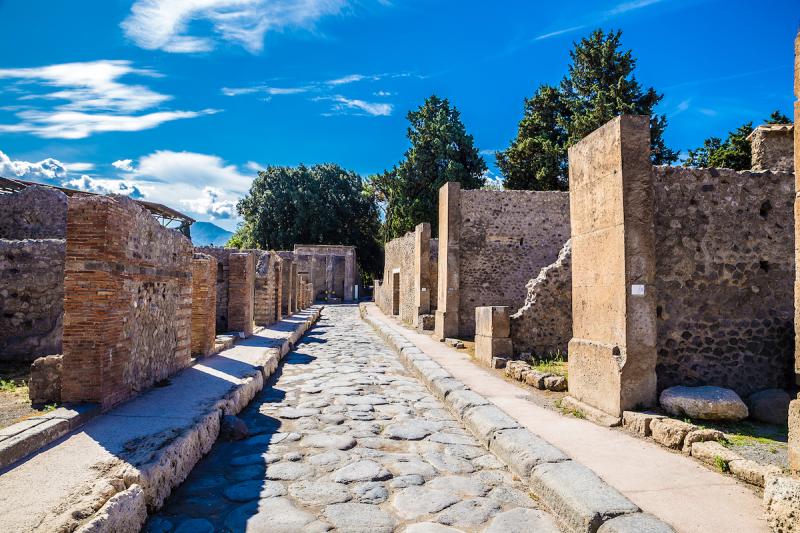Six fragments of frescoes dating from the first century AD that had been stolen from the archeological park of Pompeii have been returned to the site, the art squad unit of Italy’s Carabinieri police announced last week.
Three frescoes came from two ancient Roman houses in Stabia, 4.5 km southwest of the main Pompeii excavations; like Pompeii, the town was buried in ash by the eruption of Mount Vesuvius in 79 AD. The frescoes depict a naked cherub playing the flute, a female dancer carrying a tray and the head of a woman wrapped in laurel leaves. These are believed to have been stolen in the 1970s, smuggled out of Italy and sold to collectors in the United States, Switzerland and Britain during the 1990s, a statement by the Archeological Park of Pompeii said.
The frescoes were sliced off the decorated walls of Villa Arianna and Villa San Marco in Stabia. The Carabinieri located and confiscated them last year as part of "a wider investigation on the international trafficking of archaeological goods", the statement said.
The statement also reports the recovering of three more fragments of frescoes, found in 2012 in an illegal hole dug in the suburban villa of Civita Giuliana, a luxurious estate with terraces overlooking the sea, around 700 meters northwest of Pompeii’s walls. The frescoes were found before thieves could take them away for illegal trafficking.
“The return of these fragments is significant for several reasons,” said Massimo Osanna, former director of the Archeological Park of Pompeii and now the Italian Ministry of Culture’s General Director of Museums. “Each find constitutes an important piece of the history and knowledge of a place and must always be protected and preserved.”
The site at Civita Giuliana has been excavated since 2017. Last year, archeologists found the well-preserved remains of two victims of the eruption of Mount Vesuvius, presumed to be the bodies of a young slave and his older master. To preserve the bodies, archaeologists used a technique that turned the remains into casts.









